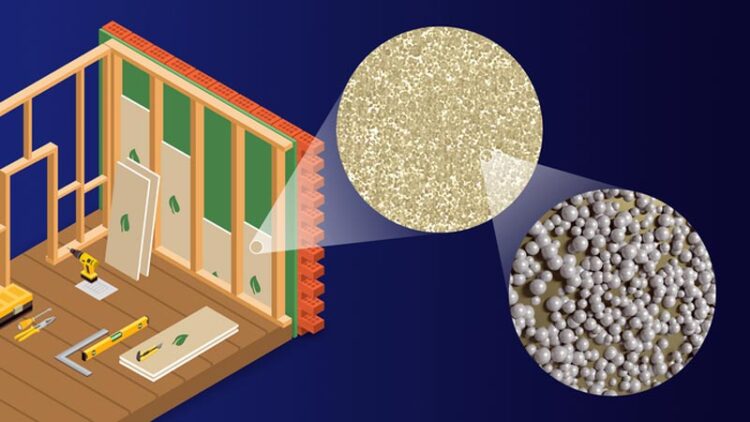Eco-friendly foam insulates buildings without warming the globe

Researchers at Oak Ridge National Laboratory developed an eco-friendly foam insulation for improved building efficiency.
Credit: Chad Malone/ORNL, U.S. Dept. of Energy
Greener insulation reduces environmental impact of foam products.
Rigid foam boards used to insulate buildings can prevent energy loss, making homes more efficient at keeping warm or cool. The advantages in energy efficiency, however, are undercut by environmental concerns over polystyrene products. Blowing agents used in foam production, such as hydrocarbons and hydrofluoroolefins, end up in the atmosphere and contribute to global warming.
Scientists at Oak Ridge National Laboratory developed a competitive, eco-friendly alternative made without harmful blowing agents. The nontoxic thermoplastic foam is made using hollow glass spheres and expandable polymer microspheres.
“The combination of these two sources allows us to tailor formulations to maintain the material’s thermal performance across a limited range of densities” said ORNL’s Meghan Lamm. “We are also working with thermoset materials, which offer high-temperature stability, for improved flame resistance.”
“The technology is readily adoptable by industry and opens avenues to develop safer composite foams for a variety of insulation systems,” said ORNL’s Tolga Aytug.
UT-Battelle manages ORNL for the Department of Energy’s Office of Science, the single largest supporter of basic research in the physical sciences in the United States. The Office of Science is working to address some of the most pressing challenges of our time. For more information, please visit energy.gov.
Journal: Polymer
DOI: 10.1016/j.polymer.2022.125652
Media Contact
Karen Dunlap
DOE/Oak Ridge National Laboratory
dunlapkk@ornl.gov
Office: 865-696-5910
All latest news from the category: Ecology, The Environment and Conservation
This complex theme deals primarily with interactions between organisms and the environmental factors that impact them, but to a greater extent between individual inanimate environmental factors.
innovations-report offers informative reports and articles on topics such as climate protection, landscape conservation, ecological systems, wildlife and nature parks and ecosystem efficiency and balance.
Newest articles

First-of-its-kind study uses remote sensing to monitor plastic debris in rivers and lakes
Remote sensing creates a cost-effective solution to monitoring plastic pollution. A first-of-its-kind study from researchers at the University of Minnesota Twin Cities shows how remote sensing can help monitor and…

Laser-based artificial neuron mimics nerve cell functions at lightning speed
With a processing speed a billion times faster than nature, chip-based laser neuron could help advance AI tasks such as pattern recognition and sequence prediction. Researchers have developed a laser-based…

Optimising the processing of plastic waste
Just one look in the yellow bin reveals a colourful jumble of different types of plastic. However, the purer and more uniform plastic waste is, the easier it is to…



